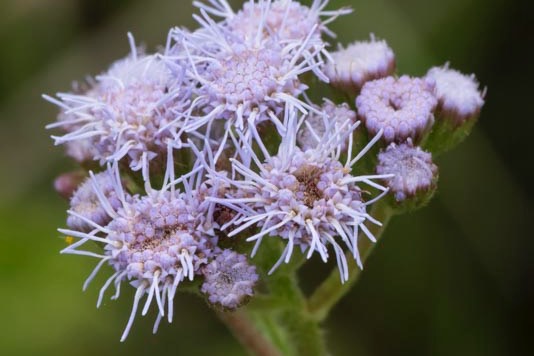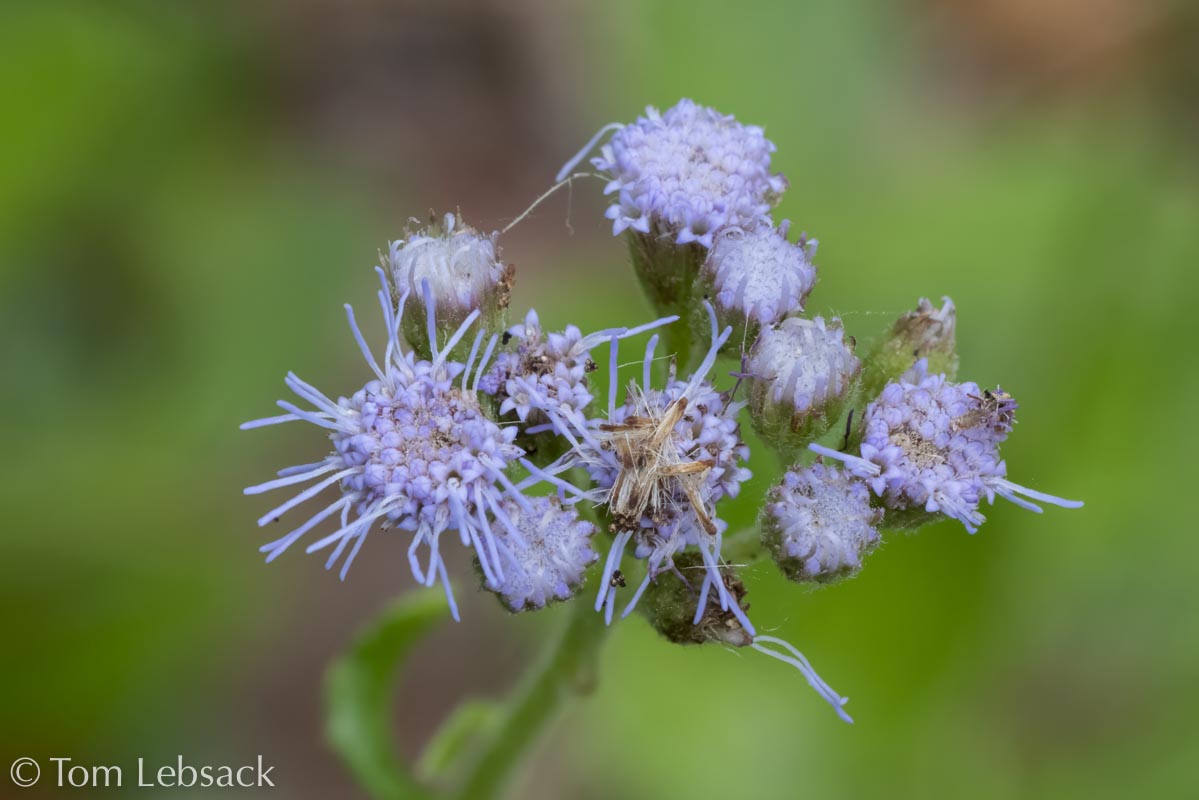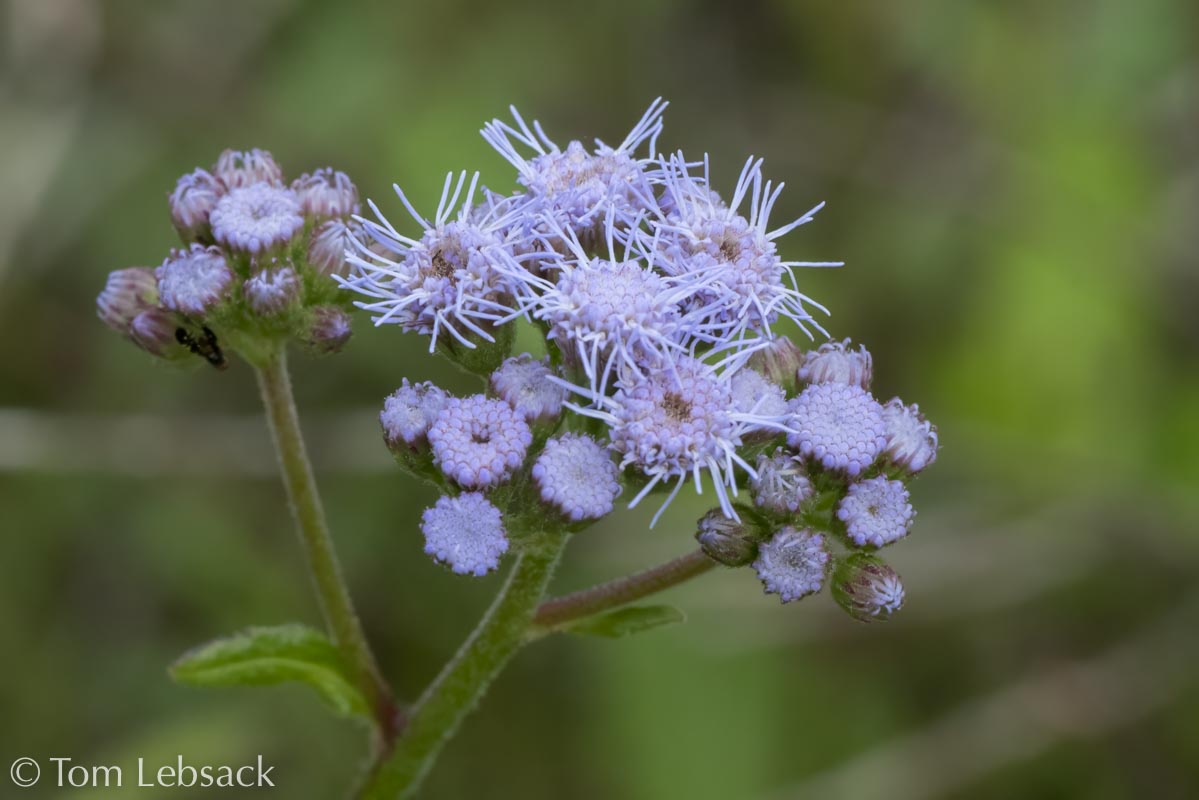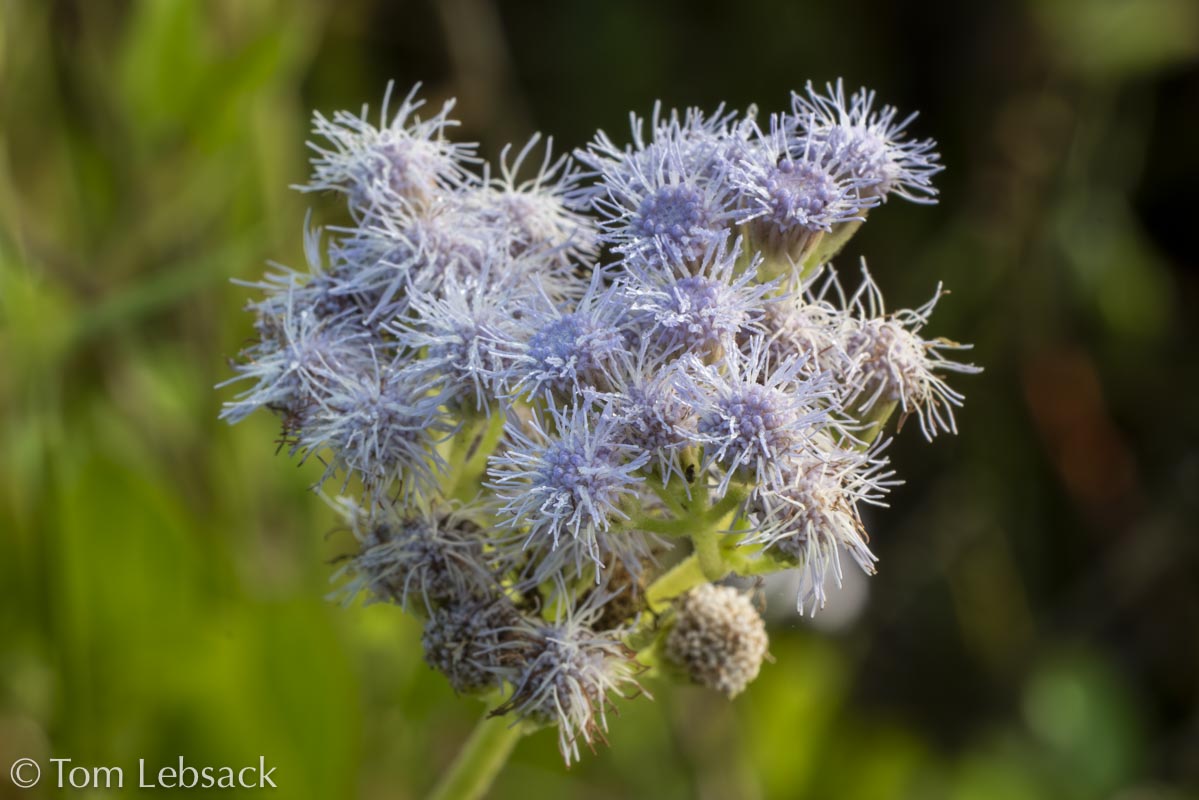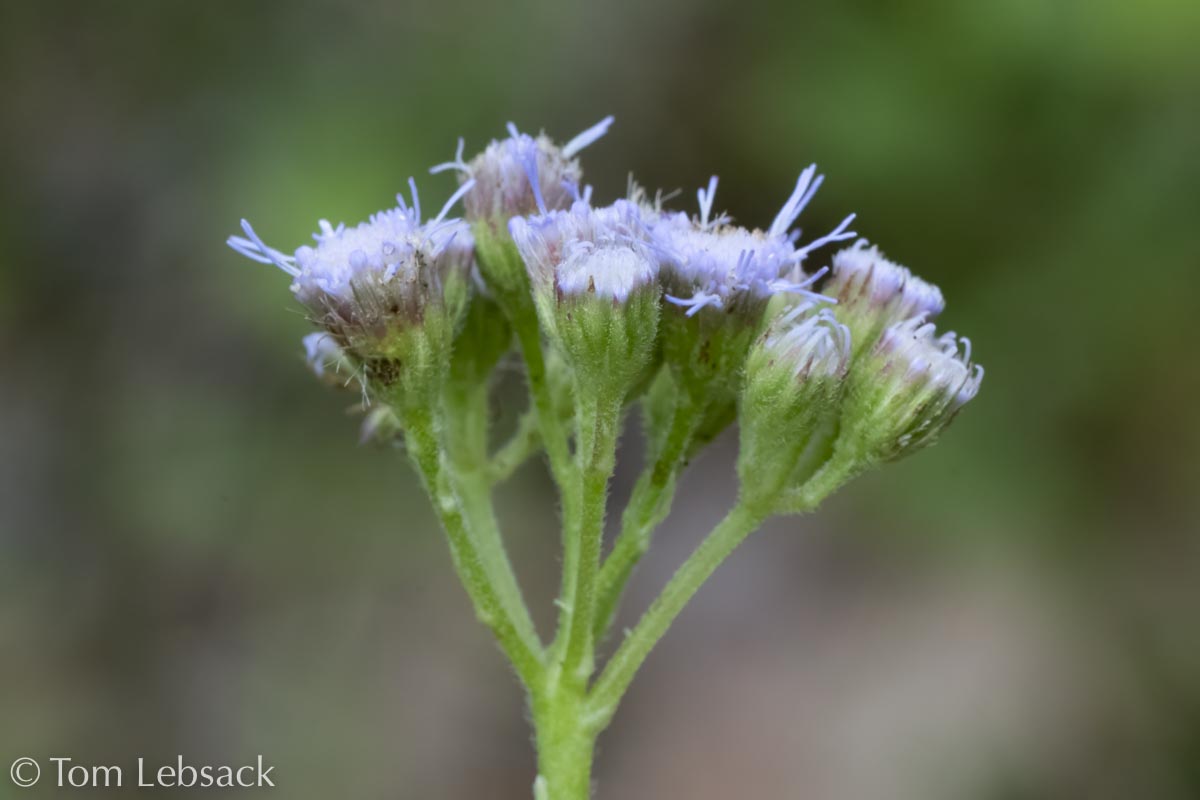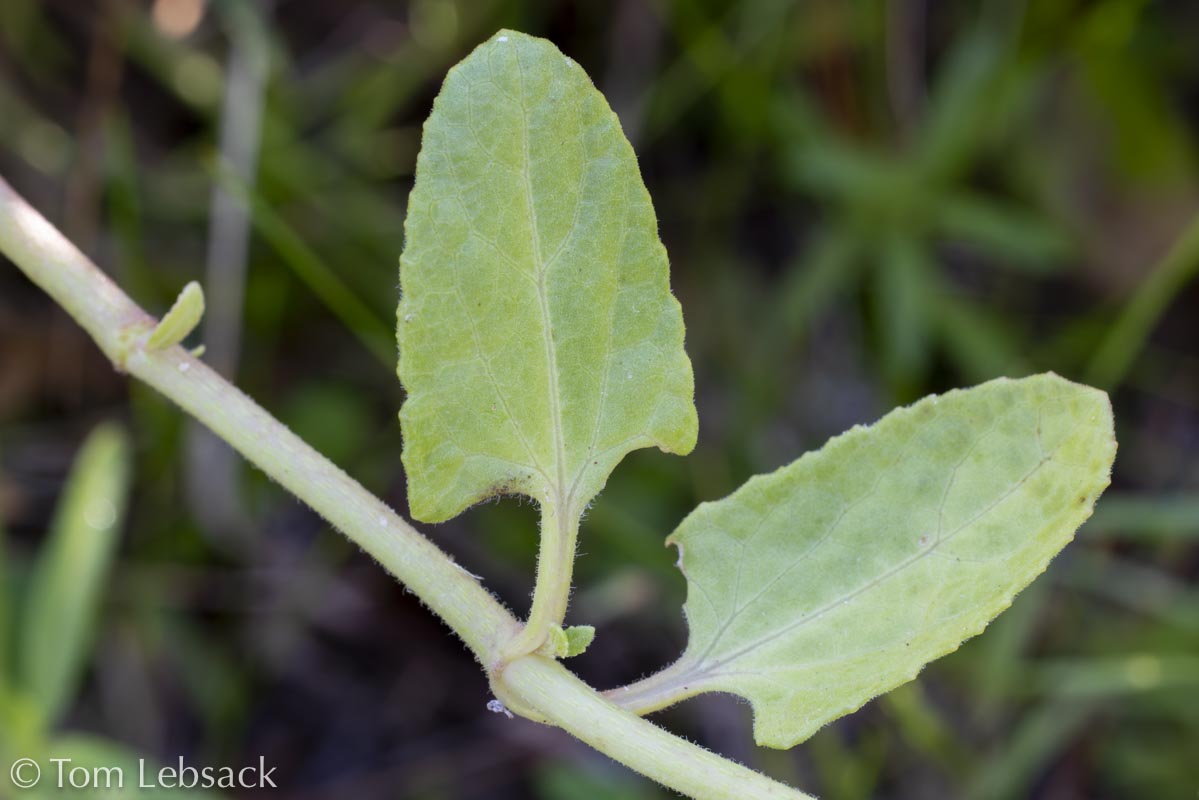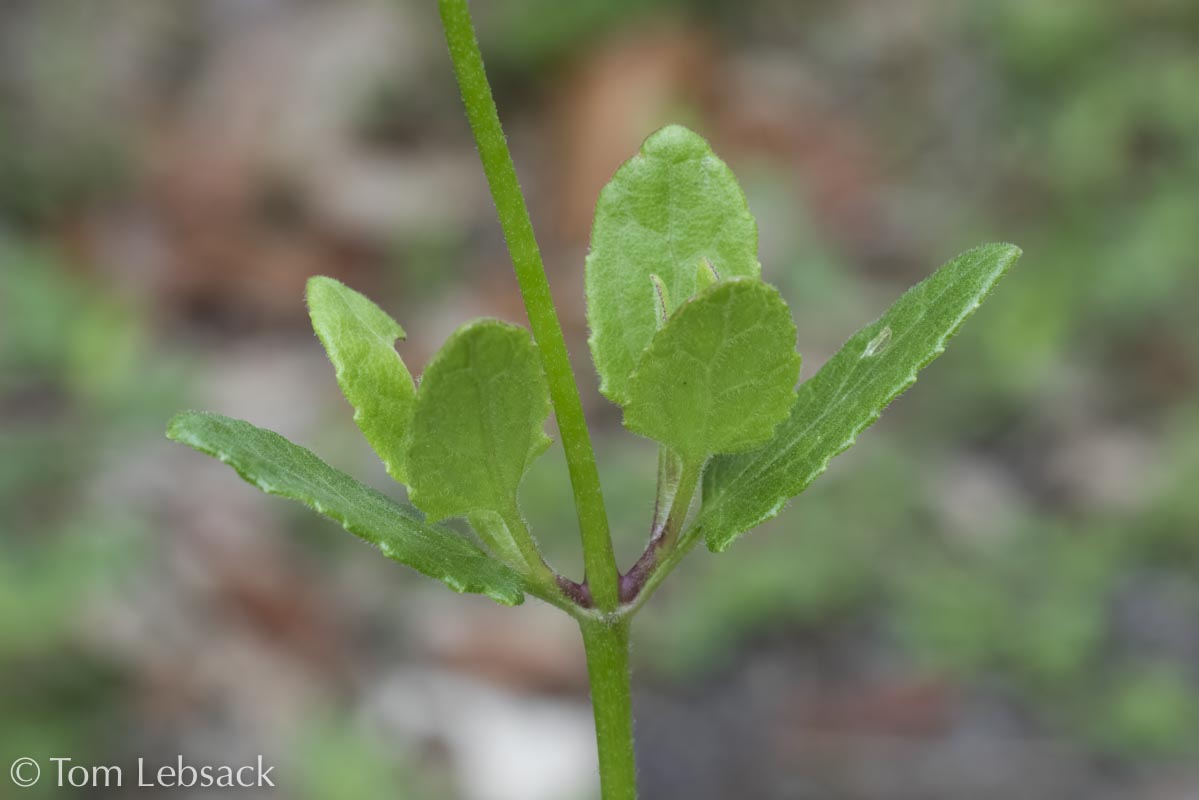Texas Wildbuds
Conoclinium betonicifolium
(Betonyleaf Mistflower)
| Scientific Name | Conoclinium betonicifolium (Eupatorium betonicifolium) | USDA PLANTS Symbol | COBE4 |
| Common Name | Betonyleaf Mistflower | ITIS Taxonomic Serial No. | 37105 |
| Family | Asteraceae (Sunflower) | SEINet Reference |
Click Here |
| Description | Habitat: Sandy or clay, moist soils in poorly drained areas, saline marshes and dunes; found along the lower Texas Gulf Coast and inland along the Rio Grande, sea level to 40 ft. Plant: Usually reclining perennial; single, much-branched, spreading stems often rooting at nodes, upper 8 to 12 inches becoming vertical; stems overall up to 40 inches long. Leaves: Opposite, oblong to oblong-lanceolate, up to 1-3/4 inches long and 3/4-inch wide on petioles ~1/3 the length of the blade; margins are crenate to dentate with rounded or blunt tips. Inflorescence: Dense clusters of flower heads forming an almost flat-topped inflorescence; disk flowers bright blue or violet, about 3/8-inch high; no ray flowers and few to several disk florets with long, thin, protruding styles. Bloom Period: April to December. References: "Wildflowers of Texas" by Getaa Ajilvsgi, "Wildflowers of Texas" by Michael Eason and Flora of North America; Eupatorium betonicifolium in "Manual of the Vascular Plants of Texas" by Correll and Johnston. Note: Some authors consider two varieties of C. betonicifolium, var. betonicifolium along the Texas Coast and var. integrifolium inland along the Rio Grande. There appear to be only minor differences, mainly in leaf shape. |
BONAP Distribution Map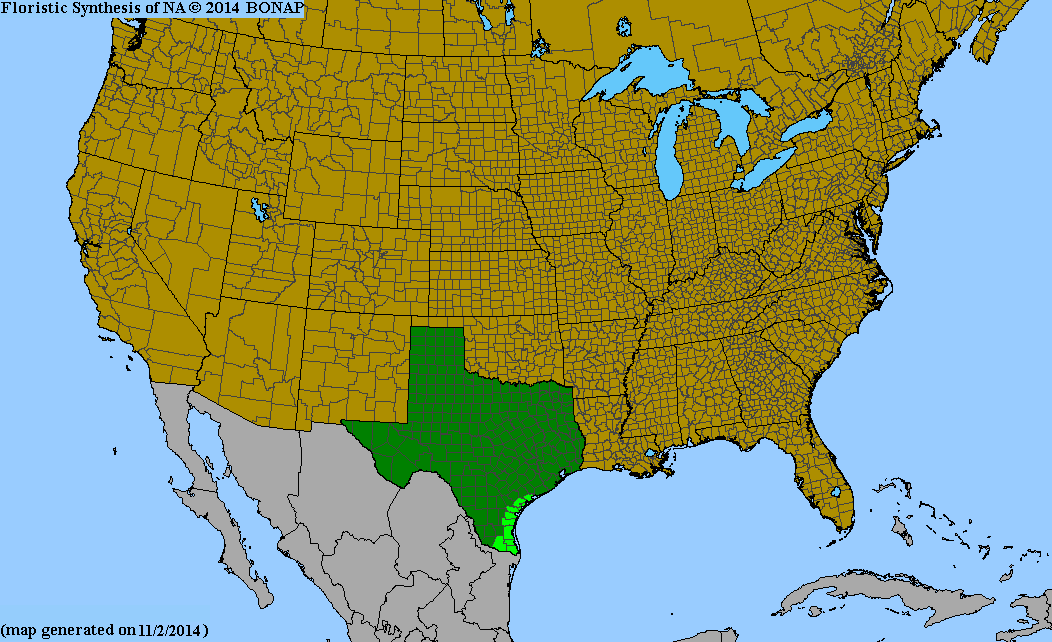 var. 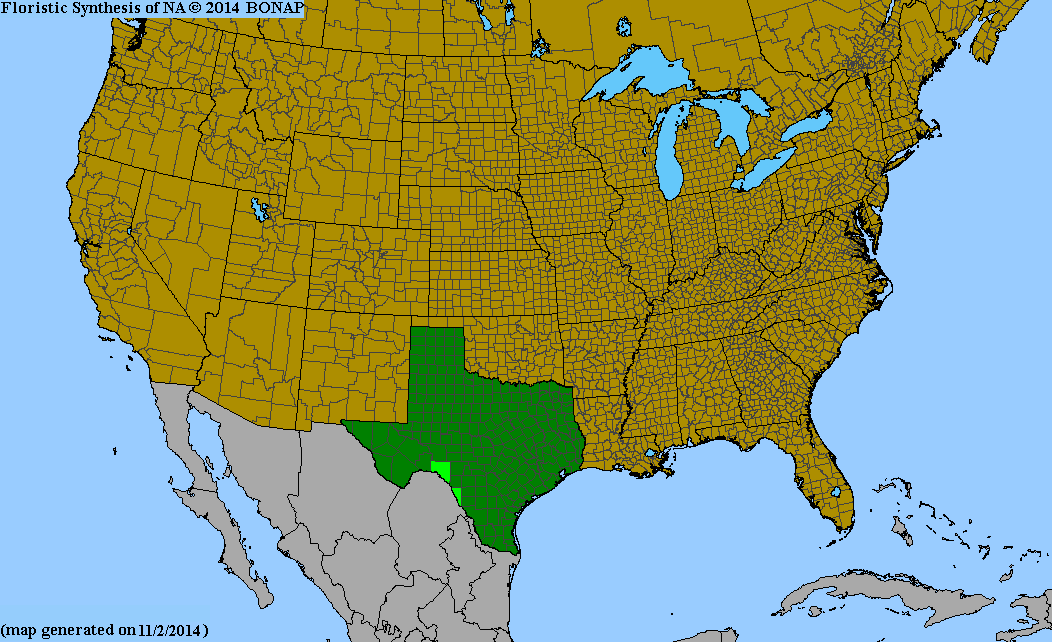 var. |
Texas Status: Native |
Banner photo of Castilleja indivisa and Lupinus ssp. taken along FM 1323 north of Johnson City, Blanco County
© Tom Lebsack 2025
Every attempt is made to provide accurate, up-to-date, and relevant information, but the completeness or accuracy of any information presented on this website cannot be guaranteed. I use authoritative references to insure high standards of accuracy and review and update the information frequently.
